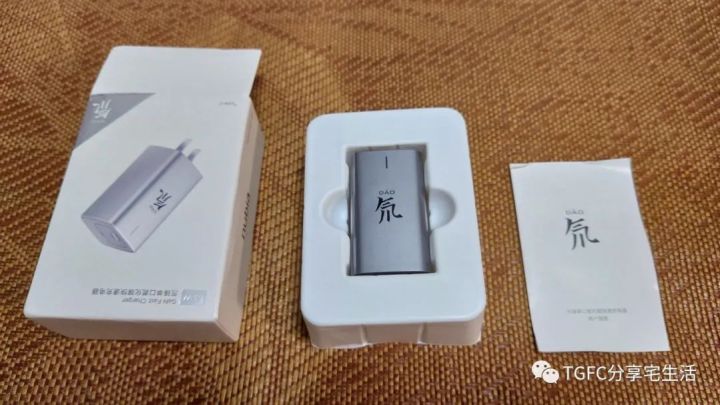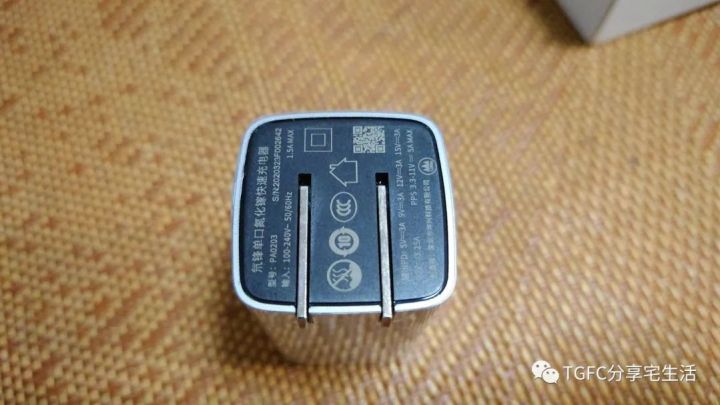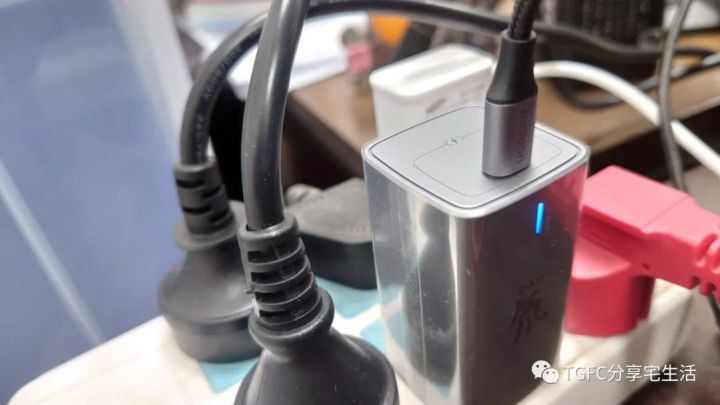Recently, my workplace provided me with a new laptop, finally retiring my old TP that I had been using for years. While the latter was reliable and had a comfortable keyboard, its design had become outdated, and the battery was completely depleted. The new HP business laptop, although fairly ordinary in terms of specifications and appearance, is a modern product overall. Aside from the subpar keyboard, it works well, especially considering it is much lighter and thinner than my old one, making it easier to commute with. Since I use a computer both at work and home, and the original power adapter is as cumbersome as my old TP’s, I decided not to carry it during my commute. However, finding a convenient place to keep the power adapter was a challenge. If I left it at the office, it wouldn’t be available on weekends, and if I kept it at home, it wouldn’t be accessible during the 8 hours at the office. In this situation, I considered purchasing a new charger with a Type-C interface that would be more portable and practical.
Gallium nitride is an advanced and popular concept in fast chargers nowadays. I’m not sure if the so-called high efficiency and low temperature actually make a significant difference, but it seemed like a promising direction to explore. Initially, I was indecisive about the number of ports. My needs were primarily charging the laptop, along with occasionally charging my phone and Nintendo Switch. Charging them separately should not pose any issues, so a single-port charger should be suitable. However, considering versatility, I also considered a charger with one Type-A and one Type-C port. After browsing through several platforms like Zhang Dama and Zhihu, I gained some understanding of the mainstream chargers available, including popular brands like Xiaomi (Zimi), Green Union, Baseus, and Smartisan. Most of them featured a slim and elongated design similar to a lipstick, with prices ranging from 80 to 200 dollars. Anker and Aohi were slightly more expensive brands, but they offered the smallest single-port chargers. Additionally, due to numerous positive reviews flooding the internet, especially for Aohi, I ultimately chose Baseus’ 1A1C charger. Here are the reasons: firstly, it is a second-generation gallium nitride charger, offering a relatively high cost-performance ratio, priced at only 79 dollars for a single head. The A port can provide up to 45W power, while competitors only offer 18W or 36W. The metal plug is non-foldable, which is a feature I preferred. Xiaomi’s Yueli, part of their ecosystem, was also a good option, but it was RMB 20 yuan more expensive.

After making my selection, I was ready to place an order. However, I suddenly noticed a confusing image in the product details page. To be cautious, I searched for related issues and was surprised to find that many people had encountered problems such as charging failure, device freezing, and even motherboard replacements. I was taken aback. After further investigation, I discovered that it was a problem specific to HP computers, possibly related to power fluctuations or charging protocols. Some staff members suggested using a charger with a single port and protocol, and using a data cable rated at 3A and below 60W, without an E-marker chip. Therefore, I decided to reconsider single-port chargers. In the end, prioritizing cost-performance, I selected the Nubia “Duo Feng” charger. It was priced at 79 dollars on JD.com without a cable, and there was a promotion on Taobao offering the same price with a 1m cable. However, I decided that I didn’t need such a short cable.
The next day, the charger arrived in a white box. The packaging quality was average, featuring a product image on the front with a silver design and the word “Duo” written in Chinese characters. It looked quite unique. This model of charger also comes in four other color options: yellow, pink, green, and blue, with vibrant and light shades. However, I didn’t find any of them particularly appealing. In one corner of the box, there was a silver “Duo” logo with pinyin (Romanized Chinese) characters, as on the charger itself.
When I took the charger out of the box, it felt lightweight, weighing less than 100g. It was slightly heavier than a regular charger but still manageable. The lipstick-shaped design didn’t take up much space on the power strip, and its 60mm length didn’t seem obtrusive. The overall texture had a matte finish, similar to sandblasting, but smoother than a typical matte surface. The edges were rounded and didn’t feel sharp. On the front, besides the “Duo” logo, there was a blue strip-shaped indicator light. On the top, there was a single Type-C port, accompanied by a lightning symbol, indicating fast charging. The bottom plug was foldable and didn’t cause any discomfort when folded. When extended, it stayed firmly in place and required some force to fold it back.

There was a minor incident regarding the data cable. Initially, I bought a white cable from Yueli to match the charger, but it turned out to have an E-marker chip, which could potentially cause charging errors. So, I had to switch to a 60W cable from Green Union, which better matched the silver aluminum shell of the charger.

In practice, the charger worked perfectly without any issues. Since I was using a 60W cable, taking into account power loss, the charging efficiency might be slightly lower than with the original 65W charger. However, I could hardly notice any difference. In about an hour, it charged from 15% to 98%, and towards the end, the power output decreased to a trickle as it approached full capacity. The charger did generate some noticeable heat, with the surface temperature ranging from 40 to 60 degrees Celsius, which was acceptable to me. I wasn’t sure about the performance of other gallium nitride chargers in this regard.







